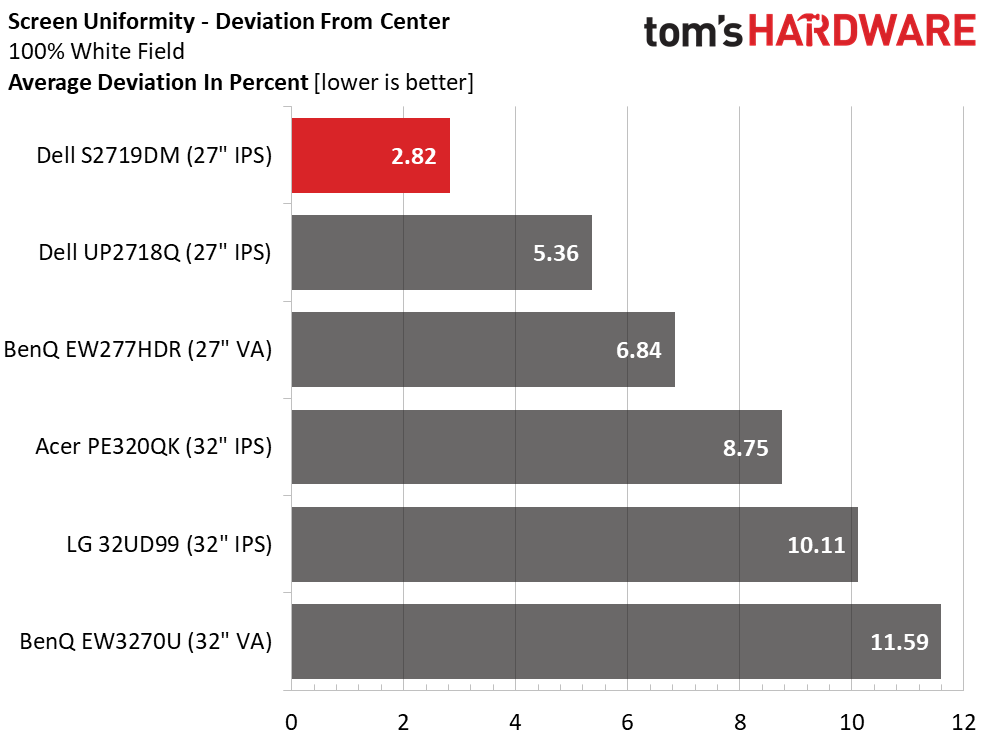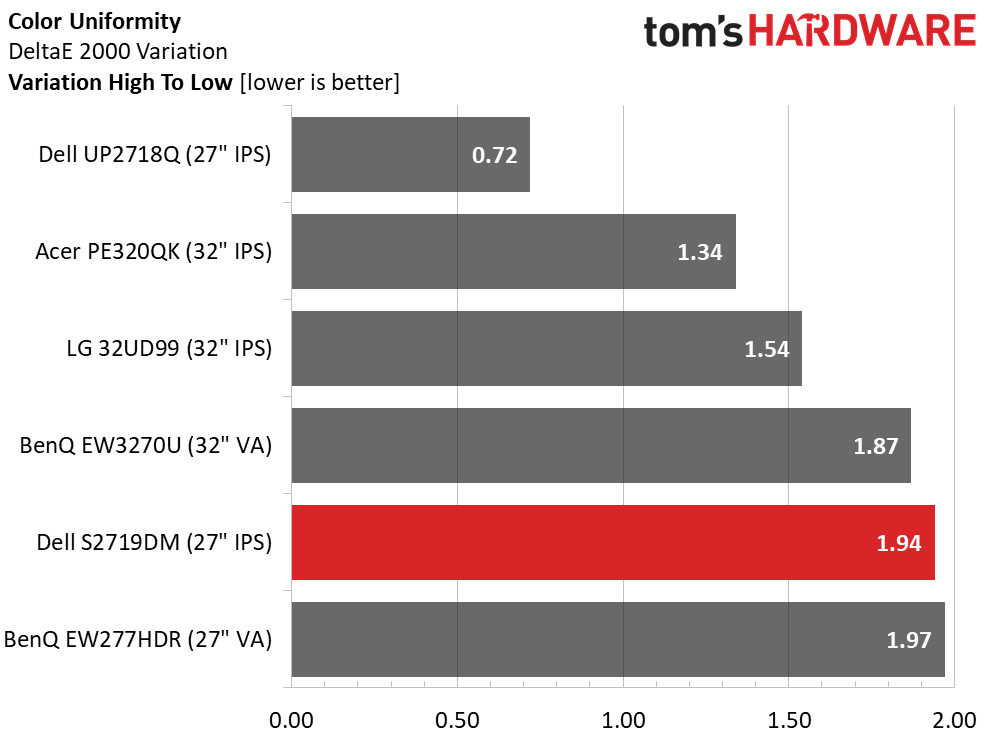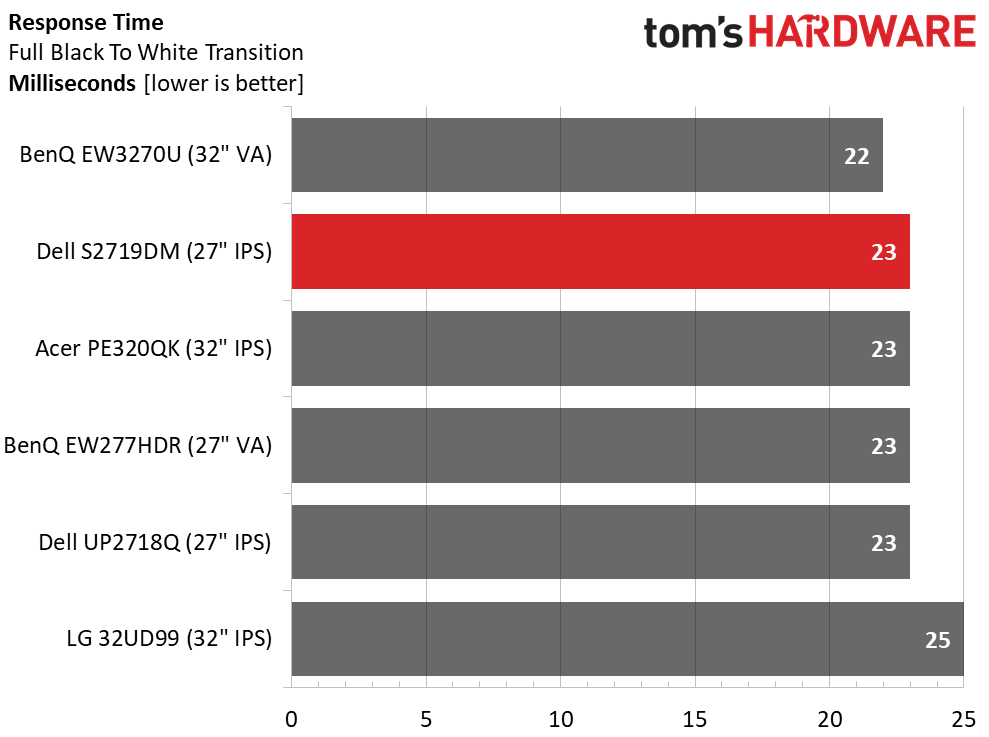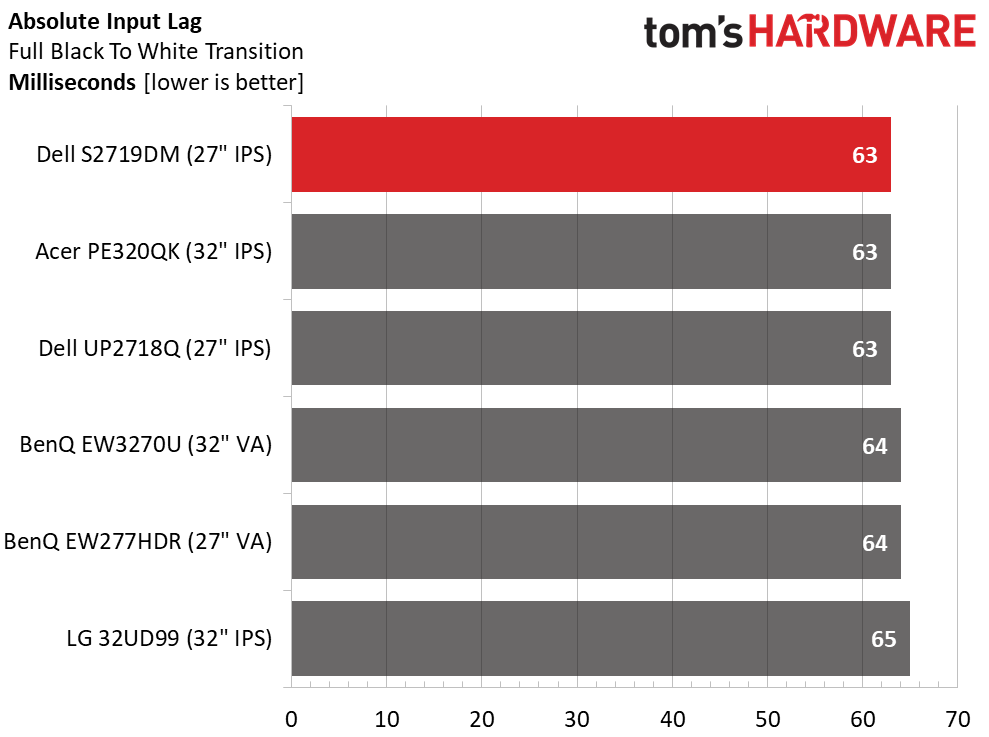Dell S2719DM 27" QHD HDR Monitor Review: Style Meets Performance
Why you can trust Tom's Hardware
Viewing Angles, Uniformity, Response & Lag
Viewing Angles
The S2719DM is no different from any other premium IPS monitor in the viewing angle department. To the sides, color shifts decidedly to green and light falloff is around 40%. Detail retention is good with all dark steps still visible. From the top, things wash out a bit more, but we can still see all brightness levels clearly. Viewing from this angle also cuts output by half and turns the tint blue.
Screen Uniformity
To learn how we measure screen uniformity, click here.



The S2719DM scored extremely well when tested for black field uniformity, also known as light bleed. With a black pattern displayed across the screen, we saw no signs of light bleed or glow. That’s impressive considering the panel’s thin design and tight-fitting components. It helps that there is a glass layer in play; glass is more rigid than plastic and prevents uneven pressure on the TFT layer, the principal cause of artifacts.
Pixel Response & Input Lag
Click here to read up on our pixel response and input lag testing procedures.


The only thing missing from the S2719DM's image quality is a fast refresh rate and adaptive sync.
All other aspects of its image quality make it perfect for casual gaming. Among 60Hz screens, it is one of the more responsive; however, we suspect plenty would be willing to drop an additional $100 for the addition of FreeSync and 120Hz. But for casual play, this monitor does fine if you ignore the occasional frame tear.
MORE: Best Gaming Monitors
Get Tom's Hardware's best news and in-depth reviews, straight to your inbox.
MORE: How We Test Monitors
MORE: All Monitor Content
Current page: Viewing Angles, Uniformity, Response & Lag
Prev Page HDR Grayscale, EOTF, & Color Next Page Conclusion
Christian Eberle is a Contributing Editor for Tom's Hardware US. He's a veteran reviewer of A/V equipment, specializing in monitors. Christian began his obsession with tech when he built his first PC in 1991, a 286 running DOS 3.0 at a blazing 12MHz. In 2006, he undertook training from the Imaging Science Foundation in video calibration and testing and thus started a passion for precise imaging that persists to this day. He is also a professional musician with a degree from the New England Conservatory as a classical bassoonist which he used to good effect as a performer with the West Point Army Band from 1987 to 2013. He enjoys watching movies and listening to high-end audio in his custom-built home theater and can be seen riding trails near his home on a race-ready ICE VTX recumbent trike. Christian enjoys the endless summer in Florida where he lives with his wife and Chihuahua and plays with orchestras around the state.
